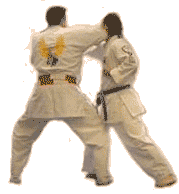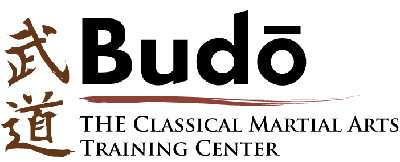The Budo Difference

Most martial arts dojos in
the Twin Cities (Minneapolis/St. Paul) area either emphasize competition/sparring,
or offer “traditional” training. Competition/sparring
appears to offer a measure of quality. This is why many business-oriented
studios emphasize it – It helps sales and makes students feel
like they are learning and doing well. However, this is often an illusion.
The very thing that is making students feel they are doing well is limiting
their long-term potential (and possibly health), and giving them an
incorrect measuring stick for understanding the potentially fathomless
depths of martial arts training.
While sparring can be a useful training tool for higher ranked students under the right circumstances, emphasis on it, and particularly using sparring competition as a goal of training, has many negative effects which severely limit training quality. Part of what karate training does is teach the body a way to react that is not built-in, or innate. Sparring competition, instead of cultivating a highly effective, non-innate way to react in a self-defense situation, accentuates less effective, mostly innate skills and develops downright dangerous habits for self-defense. These include training only to react when ready, concentrating on only a single opponent, and relying only on punching and kicking or only on grappling depending on the martial arts style. Further, having competition as the goal often results in teachers, students and the style itself not looking out for the long-term health of the students.
| Our style has a direct lineage and heritage that dates back several hundred years, and has been developed by masters who used it to defend themselves against individuals and groups, armed and unarmed... |
| Our art encompasses much more than how to “win” at sparring, and benefits from generations more knowledge than one particular individual who has won a “World Championship” |
Continue with ...
The Difference from other “Traditional”
Schools
Or check out ...
Okinawan Shorin-Ryu Karate-Do at Budo


